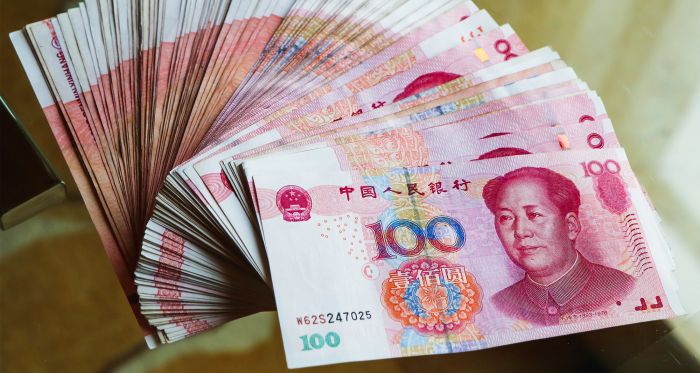The Takeaway
In the final week of September, China’s political leadership took its boldest economic step in years, unveiling a broader-than-expected suite of policies to try to restore confidence in the world’s second-largest economy.
Although domestic markets rallied initially, by October 8, they reversed course, as doubts grew about the robustness of the government's economic rescue plans. It also remains uncertain whether Beijing will be able to address the more deep-seated and structural issues plaguing the Chinese economy.
In Brief
- On September 24, China’s central bank announced a raft of economic stimulus measures. Key monetary stimuli included lowering interest rates and cutting the reserve requirement ratio (RRR), which freed up some of the cash banks must hold in reserve so that they can provide more loans. The initial RRR cut of 0.5 percentage points would inject C$192 billion (1 trillion yuan) of liquidity into the financial market, with a further reduction possible later this year.
- The faltering housing market also got a shot in the arm: 50 million households will benefit from lower mortgage rates. New tools will also be introduced to stabilize the stock market, including creating new swap and re-lending facilities that would allow institutional investors and listed companies to tap into safer, more liquid government bonds.
- The country’s six largest commercial banks could also get a separate injection totalling up to C$192 billion (1 trillion yuan), so they can channel more loans to property-development projects, indebted local governments, and venture capital for the ‘new productive force’ sectors that generally include modern manufacturing and frontier industries.
- As an indication of the government’s sense of urgency, the Chinese Communist Party (CCP) Politburo convened an economic policy meeting on September 26, much earlier than usual. At the meeting, chaired by Chinese President Xi Jinping, the group pledged to provide the “necessary fiscal spending” to meet the “around five per cent” GDP growth target for 2024, and prioritized fixing the property sector slump, improving the market environment for investors and businesses, and boosting employment and consumption.
- A day before the Politburo meeting, the Chinese State Council issued a set of guidelines for reaching “high-quality and sufficient employment,” with an emphasis on expanding emerging industries and advanced manufacturing clusters. This announcement could have been prompted by the high rate of youth unemployment, which rose in August to nearly 19 per cent according to data from China’s statistical bureau. The State Council also approved a rare one-time cash allowance for “people in extreme poverty.”
Implications
Property developers will get a boost. Beijing’s massive stimulus immediately lifted domestic markets to their highest level in years, while U.S.-listed stocks of Chinese firms surged as well. Some investors bet that China’s leaders were finally willing to shift their approach in response to experts' calls to halt the deflationary spiral that has been responsible, in part, for depressing consumer spending. Some of China’s battered property developers saw their stocks surge on September 30, as investor sentiment was buoyed by not only the slew of new national support measures, but also by announcements from the municipal governments of China’s four largest cities that they would remove restrictions on home-buying and lower down payments. Similar easing measures introduced in smaller cities earlier this year, however, have not yet produced the intended results, with the value of residential properties falling 25 per cent year-on-year in the first eight months of 2024.
Half-measures may not be enough. Many analysts also note, however, that Xi’s flurry of new stimuli was not as aggressive as what China introduced during the 2008 global financial crisis. Missing from this latest package are, for example, more decisive fiscal moves that would sustain the initial momentum. Furthermore, tackling the country’s more embedded, structural issues would require a fundamental rebalancing of the Chinese economy to focus more on domestic consumption. As one example that more needs to be done, the 7.9 per cent uptick in domestic tourist spending during this year’s National Day ‘Golden Week’ was modest compared to 2019 levels.
The optimism immediately after the stimulus measures were introduced began waning within a week. Xi’s National Day speech, given on September 30, gave no indication that there would be a more dramatic policy break and instead sounded a more ideological note. A much-anticipated press conference by the National Development and Reform Commission, China’s top state planner, only elaborated on support for investment projects and did not mention any new measures.
If demand-side measures continue to fall short, national income will still flow disproportionally into domestic production rather than consumption, maxing out the return on this recent investment as industries produce more outputs but in less efficient ways, continuing to fuel concerns in the West about manufacturing overcapacity. Chinese economists are counting on the Politburo committing to concrete solutions, such as scaling up bond issuance, increasing targeted cash transfers, and financing projects that can create jobs, all in hopes of giving its cost-conscious and debt-averse consumers the means and confidence to spend.
What’s Next
1. Beijing braces for reality check after export-led growth
While China’s electric vehicle producers saw their sales and stocks boosted by the stimulus package, the impact has been weaker on some other industries that are under scrutiny over concerns about overproduction.
Steel, for example, is in a more precarious situation, as it depends heavily on demand in the country’s real estate sector, for which inventories of unsold and unfinished properties remain high. As scrutiny of Chinese overcapacity continues in Canada and elsewhere in the world, China will need to break with its overreliance on exports and focus on increasing domestic consumption.
• Edited by: Erin Williams, Senior Program Manager, Vina Nadjibulla, Vice-President Research & Strategy, and Ted Fraser, Senior Editor, APF Canada.





